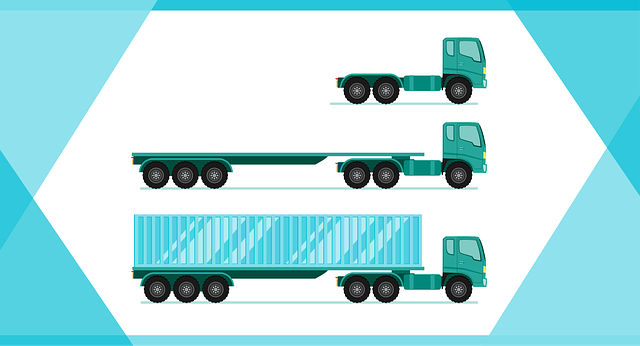The truck repair verification process ensures safety and reliability in logistics by employing advanced tools and skilled technicians for comprehensive inspections, tests, and simulations. Pre-inspection of damaged trucks is crucial for efficient repairs and minimal downtime, enhancing fleet productivity. Effective documentation tracks vehicle history and ensures quality control. Rigorous testing and specialized equipment guarantee optimal performance after repairs. Customer approval and follow-ups maintain high service standards, fostering loyalty among truck owners.
The repair verification process for trucks is a critical step in ensuring quality and customer satisfaction. This comprehensive guide covers essential aspects of truck repair, from pre-inspection preparation to post-repair follow-up. Learn about accurate documentation, rigorous testing, and securing customer approval. Discover best practices to maintain service standards and build trust with your trucking clients.
- Understanding Truck Repair Verification Basics
- Pre-Inspection: Preparing for the Process
- Documentation: Recording Repairs Accurately
- Testing and Quality Assurance Checks
- Customer Approval: Ensuring Satisfaction
- Post-Repair Follow-Up: Maintaining Service Standards
Understanding Truck Repair Verification Basics

The truck repair verification process is a crucial step in ensuring that vehicles return to the road safely and reliably. It involves a meticulous inspection and testing regimen designed to verify the quality and safety of repairs made to trucks, which are integral to the logistics and transportation industry. This process guarantees that any issues identified during the repair are correctly addressed, adhering to stringent safety standards.
Understanding the basics of truck repair verification is essential for both repair shops and vehicle owners. It encompasses a comprehensive check-up, including structural integrity assessments, mechanical system tests, and thorough road simulations. By employing advanced diagnostic tools and experienced technicians, repairs are validated, ensuring trucks meet performance and safety benchmarks before they hit the road again. This meticulous approach not only safeguards drivers and passengers but also maintains the overall efficiency and reliability of the trucking industry.
Pre-Inspection: Preparing for the Process

Before the repair verification process begins, a thorough pre-inspection is crucial. This involves a detailed assessment of the damaged vehicles, especially for fleet operators managing multiple trucks. During this phase, skilled technicians meticulously examine the condition of each truck, creating a comprehensive report that serves as a roadmap for the subsequent repairs. They inspect not just the visible exterior but also delve into the intricate mechanisms and systems, ensuring no potential issues are overlooked.
Pre-inspection is about preparing for an efficient and accurate repair process. It allows workshops to gather essential information, estimate costs, and set realistic timelines. By addressing all concerns beforehand, this step guarantees that when repairs commence, they will be executed swiftly and effectively, minimizing downtime for the trucks and maximizing fleet productivity.
Documentation: Recording Repairs Accurately

Effective documentation is a cornerstone of any successful repair verification process, especially in the context of commercial fleets like trucks. Accurately recording repairs ensures that every detail of the maintenance performed is accounted for, providing a clear audit trail. This is crucial for several reasons; it allows managers to track the history of each vehicle, enabling them to make informed decisions about future maintenance needs and extending the lifespan of their fleet.
Moreover, detailed documentation aids in quality control. By meticulously logging repairs, technicians can be held accountable for the work they perform, leading to higher standards of workmanship. This is particularly important when dealing with complex truck repairs, where precision and adherence to specifications are vital for safety and performance.
Testing and Quality Assurance Checks

In the repair verification process, thorough testing and quality assurance checks are non-negotiable steps, especially for heavy vehicles like trucks. These rigorous procedures ensure that each repaired component meets safety standards and functions optimally. Specialized equipment is employed to conduct a series of tests, simulating real-world conditions to validate the effectiveness of the repairs.
The process involves meticulous inspections, performance evaluations, and stress tests tailored to the specific requirements of truck components. By combining advanced technology with expert mechanicians, these checks guarantee that trucks are restored to their original condition or even beyond, ensuring reliable operations on the road.
Customer Approval: Ensuring Satisfaction

After repairs are completed on a truck, customer approval becomes a crucial step in the verification process. It’s an essential quality control measure that ensures the client is satisfied with the work done. This involves a thorough inspection by the customer to verify that all issues have been addressed to their satisfaction and that the repair accurately meets their expectations.
The approval stage also facilitates open communication between the repair shop and the truck owner, addressing any concerns or questions. By obtaining customer approval, the repair shop not only builds trust but also ensures the long-term reliability of its services. This is particularly important in the trucking industry where efficient and dependable operations are paramount.
Post-Repair Follow-Up: Maintaining Service Standards

After a repair is completed, following up with customers is crucial for maintaining high service standards. This process involves reaching out to clients to ensure their satisfaction and gather feedback on the quality of work done, especially for complex repairs on trucks. A simple check-in call or survey can go a long way in building trust and understanding customer expectations.
By inquiring about the repair experience, any potential issues can be promptly addressed, ensuring the customer feels heard. Moreover, this follow-up allows businesses to refine their services, making necessary adjustments based on real-world feedback. Regular post-repair check-ins are a vital aspect of customer care, fostering loyalty and promoting continuous improvement in fleet maintenance practices for trucks.
The comprehensive truck repair verification process ensures that every step of a truck’s restoration meets high standards. From pre-inspection and meticulous documentation, to rigorous testing and customer approval, each phase safeguards the quality and safety of these powerful machines. Regular post-repair follow-ups further solidify the commitment to excellence, ensuring customers receive top-notch service for their trucks.
